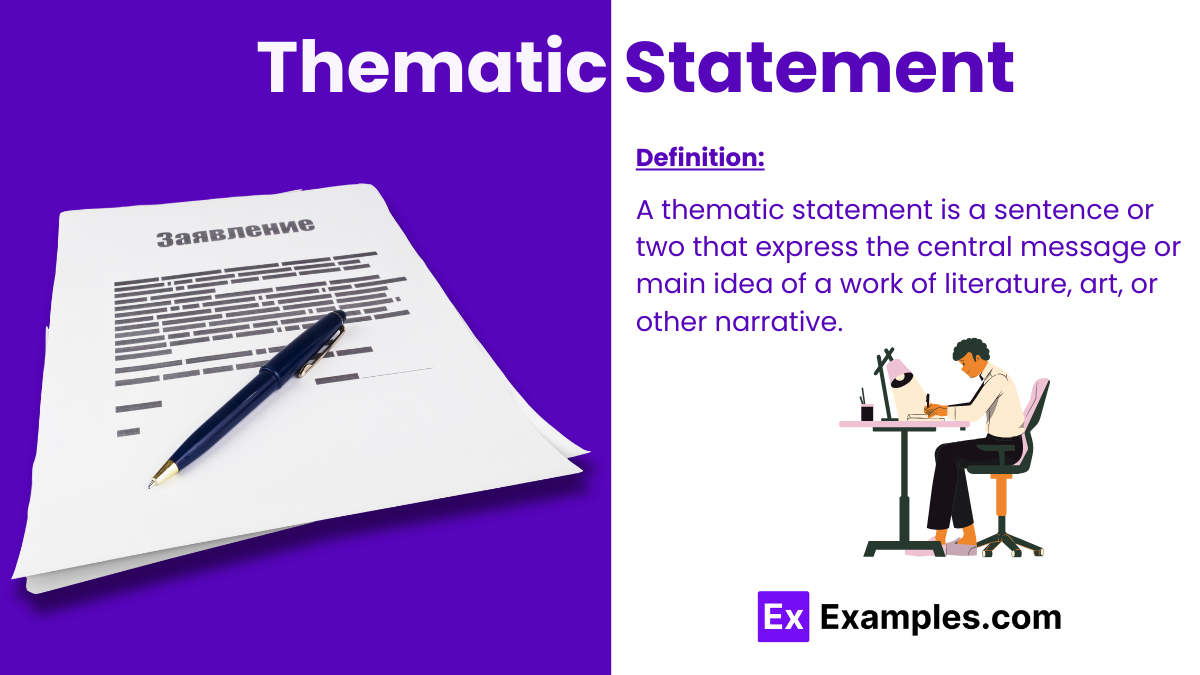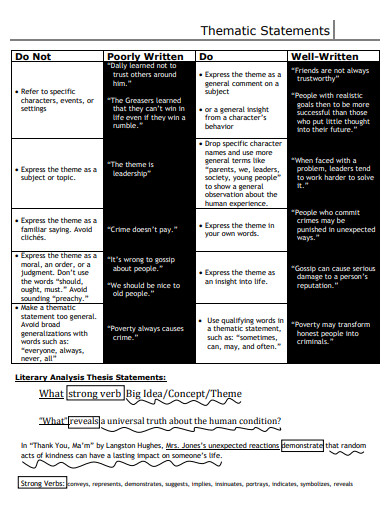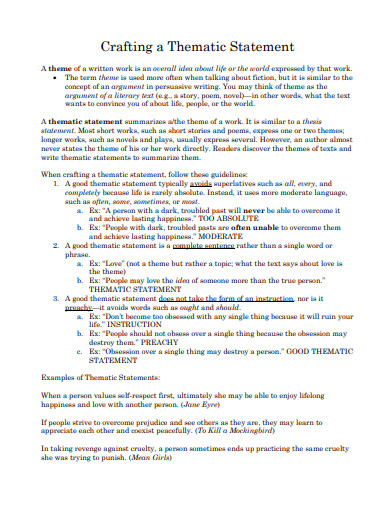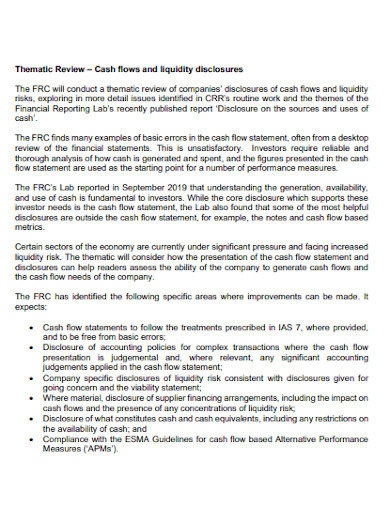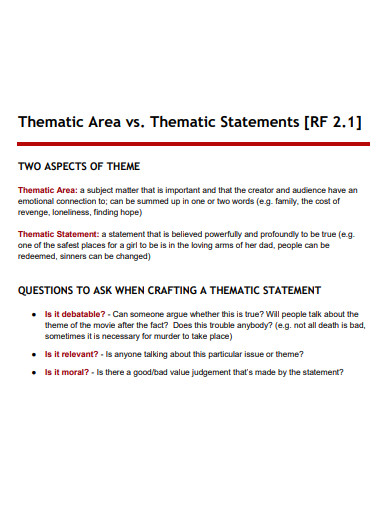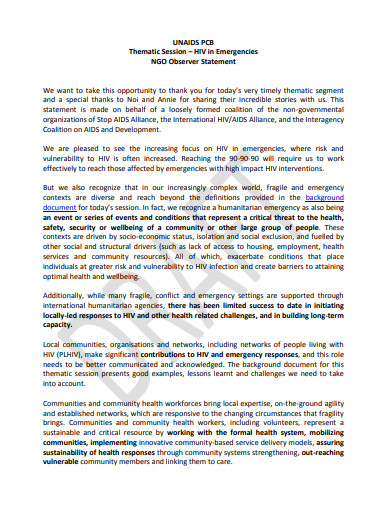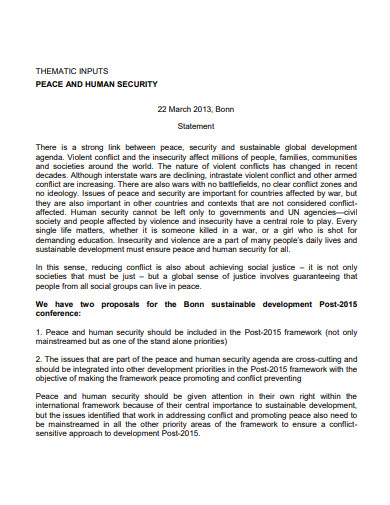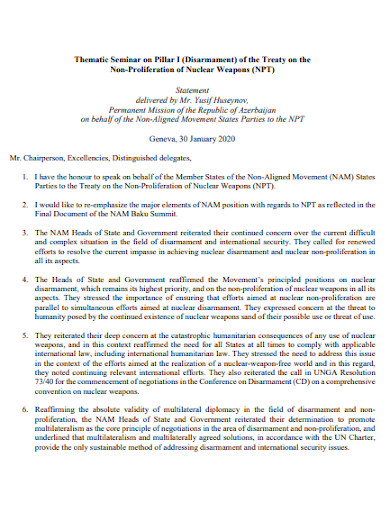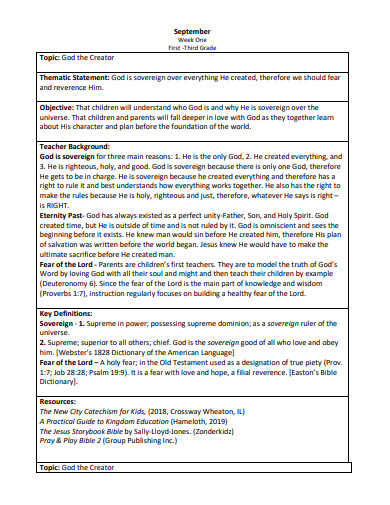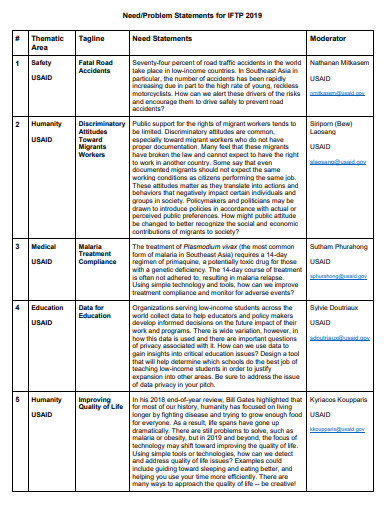10+ Thematic Statement Examples to Download
Every creative writing requires a good theme to focus on. That is why writing a thematic statement can be essential especially if you are fond of writing creative works and those that are aligned with literature. So how are we supposed to make a good one? First, we get into the whole idea of what a thematic statement is all about.
A thematic statement is a sentence or two that express the central message or main idea of a work of literature, art, or other narrative. It distills the underlying themes into a clear, concise statement that describes the essence of the work in terms of universal truths and fundamental human experiences. Unlike a plot summary, which recounts what happens in the story, a thematic statement focuses on what the story is about on a deeper level.
- Summarize the Plot: Briefly outline the main events of the story to understand the context in which the theme is presented.
- Identify the Subject: Determine the subject of the story, which is usually a topic or concept that the story revolves around, such as love, war, friendship, betrayal, courage, etc.
- Observe the Characters and Their Journey: Look at the main characters, their development, challenges they face, and their responses to those challenges.
- Reflect on the Conflicts: Consider the central conflicts of the narrative and how they are resolved. This can provide insight into the theme.
- Consider Universal Implications: Think about what the story suggests about the human experience, society, or life in general.
- Avoid Specifics and Clichés: Don’t mention specific character names or plot points in your theme statement, and avoid overused phrases or vague generalizations.
- Write a Full Sentence: Formulate a complete sentence that expresses the general truth or insight into life that the story communicates.
- Be Precise and Meaningful: The statement should be clear and meaningful, offering a specific insight rather than a broad, generic idea.
Thematic Statement Format
A thematic statement typically doesn’t follow a strict “format” in the way that business or academic documents might, but it does adhere to certain conventions to ensure that it effectively communicates the theme. Here’s a generalized structure you can use:
- Start with the subject: Begin with a broad subject or topic that the work addresses (e.g., love, power, betrayal, courage).
- Add insight or viewpoint: Follow with an assertion that offers insight or a viewpoint on the subject. This should reflect what the work seems to say about the subject.
- Keep it universal and timeless: The statement should not be limited to the context of the story alone but should suggest a message that is universally applicable.
Combining these elements, a thematic statement might look something like this:
“[Subject] is portrayed as [insight or viewpoint], suggesting that [universal truth or message].”
Here’s a thematic statement for a hypothetical novel about perseverance in the face of adversity:
“Perseverance in the face of adversity demonstrates the strength of the human spirit, suggesting that enduring hardships can lead to personal growth and triumph.”
- Clarity of Message: A thematic statement distills a complex narrative into a clear, concise message, helping readers understand the deeper meanings and central ideas of a text.
- Analytical Focus: It provides a focal point for analysis, discussion, and criticism, allowing readers and students to explore how various elements of the work, such as character, setting, plot, and literary devices, contribute to the overall theme.
- Writing and Communication: For writers, a thematic statement can act as a guiding principle or thesis that keeps the narrative focused on conveying a specific message or exploring a particular concept.
- Universal Appeal: Thematic statements often articulate universal truths or experiences, making the story more relatable and impactful to a broader audience by connecting individual stories to larger human issues.
- Educational Tool: In education, thematic statements are used to teach students critical thinking skills as they must analyze the text to identify themes and express them in a generalized statement.
- Cultural and Historical Context: Thematic statements can reveal the cultural or historical context of the work, providing insight into the values, beliefs, and concerns of the time period or society depicted.
- Personal Reflection: They encourage personal reflection as readers consider how the theme relates to their own lives, experiences, and beliefs, often leading to a deeper personal engagement with the text.
- Enhanced Appreciation: Understanding the theme of a work can lead to a greater appreciation for the artistry of the author, as themes are often intricately woven into the fabric of the narrative through various literary techniques.
Do’s:
- Do Be Concise: Aim for a succinct statement that captures the essence of the theme in one or two sentences.
- Do Be Specific: While the theme should be universal, the statement should be precise in what it conveys about the theme.
- Do Make It Universal: The theme should not be confined to the story but should touch on a universal truth or condition that applies to life or human nature in general.
- Do Reflect the Work as a Whole: Ensure that the thematic statement reflects the entirety of the work and not just a part.
- Do Focus on the Big Picture: The statement should address big ideas and concepts, not just summarize the plot.
- Do Use Present Tense: Thematic statements should generally be in present tense to give a sense of timelessness to the theme.
Don’ts:
- Don’t Be Too Broad or Vague: Avoid general statements that could apply to any story (e.g., “Love is important”).
- Don’t Include Specific Details: Avoid mentioning character names, specific events, or plot details.
- Don’t Make It a Moral: Try not to phrase the theme as a command or a directive (e.g., “You should always tell the truth”).
- Don’t Use Clichés: Stay away from overused phrases that may not add meaningful insight.
- Don’t State It as a Question: A thematic statement should be declarative, not interrogative.
- Don’t Confuse with a Subject: A theme is not just a topic (e.g., “war”) but an opinion about the topic (e.g., “War leads to the loss of innocence”).
10+ Thematic Statement Examples
1. Thematic Statements Template
2. Crafting a Thematic Statement
3. Thematic Review Statement
4. Thematic Discussion on Gender Statement
5. Thematic Debate Statement
6. Printable Thematic Statement
7. Thematic Session Statement Template
8. Thematic Inputs Statement
9. Thematic Seminar Statement
10. Thematic Statement Example
11. Thematic Statement in PDF
FAQs
Thematic Statement for Identity
“Identity is sculpted through a balance of self-discovery and societal influence, reflecting the ongoing conflict between personal authenticity and external expectations.”
Good Thematic Statement
A good thematic statement universally resonates, offering deep insight without detailing specific plot points, and evokes broader discussion.
Strong Thematic Statement
A strong thematic statement clearly conveys a profound message, is thought-provoking, and captures the essence of the work’s underlying themes.
Thematic Statement for Family
“Family dynamics forge our character and life’s path, highlighting that our deepest connections can be both nurturing and complex.”
Thematic Statement for Friendship
“Friendship transcends life’s adversities, emphasizing that true companionship provides strength and resilience in the face of challenges.”
Can a theme be a definition?
A theme can not be a definition, rather it is the main idea of the context.
Do I have the freedom to choose what theme I want for my story?
Yes. There are a lot of themes to choose from. You just have to choose the one that fits your work.
Can a thematic statement be a question?
A thematic statement cannot be in the form of a question.
In conclusion, a thematic statement is a concise and general message about a particular theme or topic sentencesthat is woven into a literary work or any form of art. It serves as the main idea that the author or artist wants to convey to the audience. A well-crafted thematic statement can help readers or viewers understand the deeper meaning of a work and its significance in relation to the real world. Overall, thematic statements are essential in analyzing and appreciating the richness and complexity of literature and art.


